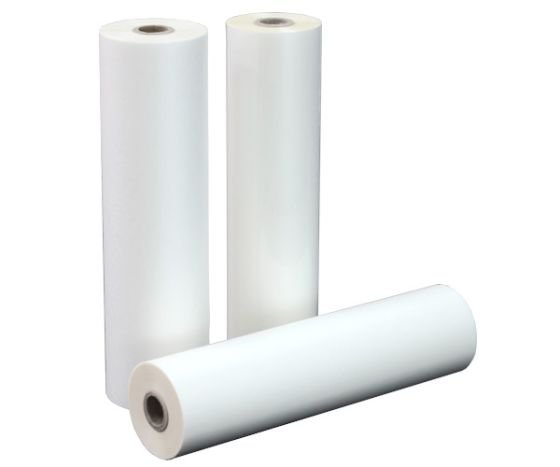Laminating films are popular choice for protecting documents, photos, and various materials. Whether in a school, office, or home setting, the use of laminating film enhances the longevity and durability of important items. But what exactly is laminating film, how does it work, and why is it significant? In this article, we will delve into the science behind laminating film and explore its importance in various applications.
What Is Laminating Film?
Laminating film is a thin plastic layer used to coat and protect documents or other materials. Typically made from polyester or polypropylene, it comes in various thicknesses and finishes, including glossy, matte, and satin. Laminating film can be applied using heat or pressure, depending on the type of laminator being used.
Types of Laminating Film
- Hot Laminating Film: This type requires heat to seal the film around the document. It offers a strong bond and is ideal for heavy-use items.
- Cold Laminating Film: This type uses adhesive to bond the film to the document without heat, making it suitable for heat-sensitive materials.
- Self-Adhesive Laminating Film: This film has an adhesive backing, allowing users to stick it directly onto documents without a laminator.
The Composition of Laminating Film
Understanding the composition of laminating film provides insight into how it protects documents and materials. The primary materials used in laminating films include:
1. Polyester (PET)
Polyester is the most common material used for laminating film. It is known for its clarity, durability, and resistance to tearing. Polyester laminating film is ideal for applications requiring transparency and strength, such as preserving photographs or important documents.
2. Polypropylene (PP)
Polypropylene is another material used in laminating films. While slightly less durable than polyester, polypropylene is more cost-effective and is often used for less critical applications, like school projects or temporary displays.
3. Additives
Laminating films may also include additives to enhance properties such as UV resistance, anti-scratch features, and anti-static qualities. These additives help to improve the film’s performance in various environments.
How Laminating Film Works
The process of lamination involves several steps, which can vary depending on the type of laminating film and laminator used. Here’s a breakdown of how the process works:
1. Preparation of the Document
Before laminating, it’s essential to prepare the document. This involves ensuring it is clean, flat, and free of wrinkles. Any imperfections on the surface can become trapped under the film, compromising the final result.
2. Feeding the Document into the Laminator
Once the document is prepared, it is placed in a laminating pouch or directly into the laminating machine, depending on the type of film being used. The laminator typically consists of heated rollers that apply pressure to seal the film around the document.
3. Applying Heat or Pressure
- For Hot Laminating: The laminating machine heats the rollers to a specific temperature, allowing the adhesive side of the laminating film to bond securely to the document.
- For Cold Laminating: The film is pressed onto the document using pressure, with an adhesive backing allowing it to stick without the need for heat.
4. Cooling and Trimming
After the lamination process is complete, the document cools, allowing the adhesive to set. If needed, excess film is trimmed away, resulting in a polished, professional-looking product.
Why Laminating Film Matters
Laminating film plays a crucial role in various settings, providing significant benefits that contribute to its popularity. Here are a few reasons why laminating film matters:
1. Protection Against Wear and Tear
Laminating film provides a protective barrier against moisture, dirt, and physical damage. Documents exposed to daily use, such as menus, ID cards, and educational materials, can benefit from this added layer of protection. By preventing wear and tear, laminating film ensures that important items remain in excellent condition over time.
2. Enhanced Durability
Laminated documents offer unmatched durability, as they withstand spills, tearing, and fading, making them ideal for environments where people frequently handle them. This increased durability translates to longer-lasting documents, which is especially valuable in business settings where critical materials must remain intact.
3. Improved Aesthetics
Laminating film enhances the appearance of documents by providing a polished, professional look. The glossy finish can make colors more vibrant, while a matte finish offers a more subdued appearance. This visual enhancement is essential in marketing materials, presentations, and educational resources where first impressions matter.
4. Versatile Applications
The versatility of laminating film allows users to apply it in a wide range of applications. Users can preserve family photos and create signage for events, employing laminating film in various ways. It is equally beneficial for personal projects and professional use, making it a valuable tool for everyone.
5. Cost-Effectiveness
Investing in laminating film and a laminating machine saves money in the long run. By protecting documents and materials, you reduce the need for replacements and repairs, saving money over time. This is particularly beneficial for businesses that rely on printed materials for their operations.
Common Uses of Laminating Film
Understanding the various applications of laminating film helps to illustrate its importance. Here are some common uses:
1. Educational Materials
Teachers and educators use laminating film to protect and enhance teaching aids, such as flashcards, posters, and worksheets. You can reuse laminated materials multiple times, making them more economical and environmentally friendly.
2. Business Documents
In the corporate world, laminated documents such as business cards, presentations, and training materials look more professional and are more durable. This enhances the brand image and protects essential documents.
3. Crafting Projects
Crafters often use laminating film for various projects, from making bookmarks to creating custom greeting cards. The ability to laminate enhances creativity and allows for the production of high-quality, personalized items.
4. Marketing Materials
Businesses utilize laminating film for flyers, brochures, and menus, providing an attractive presentation that captures attention. The durability of laminated marketing materials ensures that they withstand handling and remain visually appealing.
5. ID Cards and Badges
Organizations widely use laminating film to create durable and wear-resistant ID cards and badges. This is especially important in workplaces, schools, and events where identification is crucial.
Conclusion
The science behind laminating film is a fascinating combination of materials, technology, and practicality. Understanding how it works and its significance in various applications can help individuals and businesses make informed decisions about using laminating films for their needs. From protecting important documents to enhancing the aesthetic appeal of materials, laminating films serves a vital role in preserving and presenting information.
Whether you’re using a laminating film roll for crafting projects or professional documents, the benefits are clear. Embracing the advantages of laminating film can lead to better protection, improved durability, and enhanced creativity in your everyday life. By recognizing the science behind laminating film, you can make the most of this versatile tool and enjoy its many benefits.




